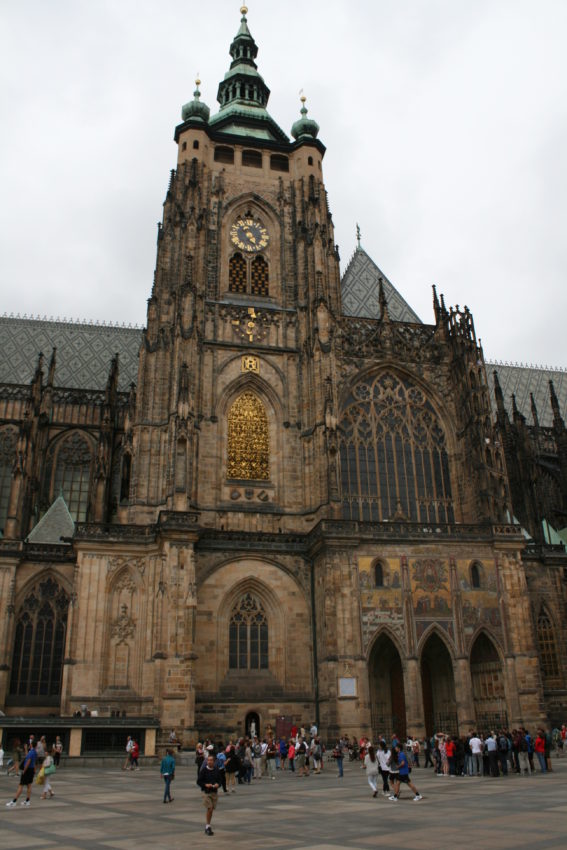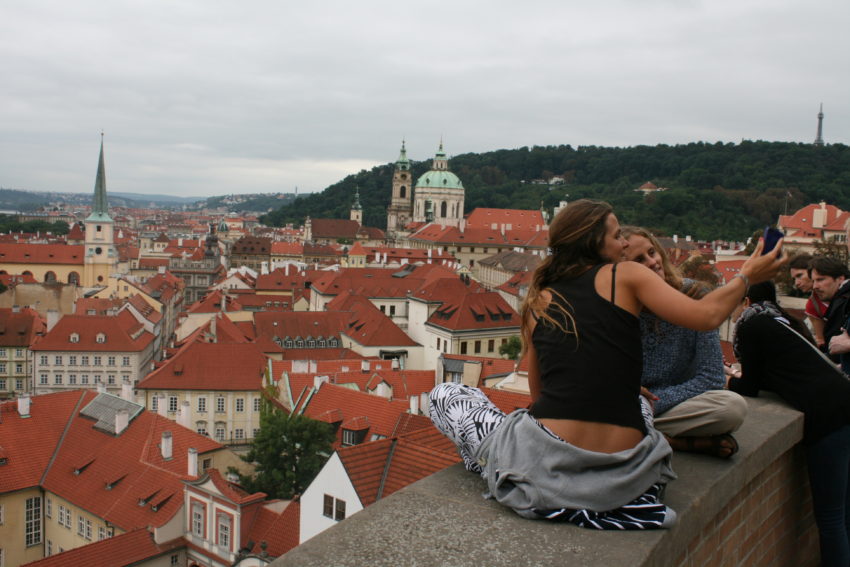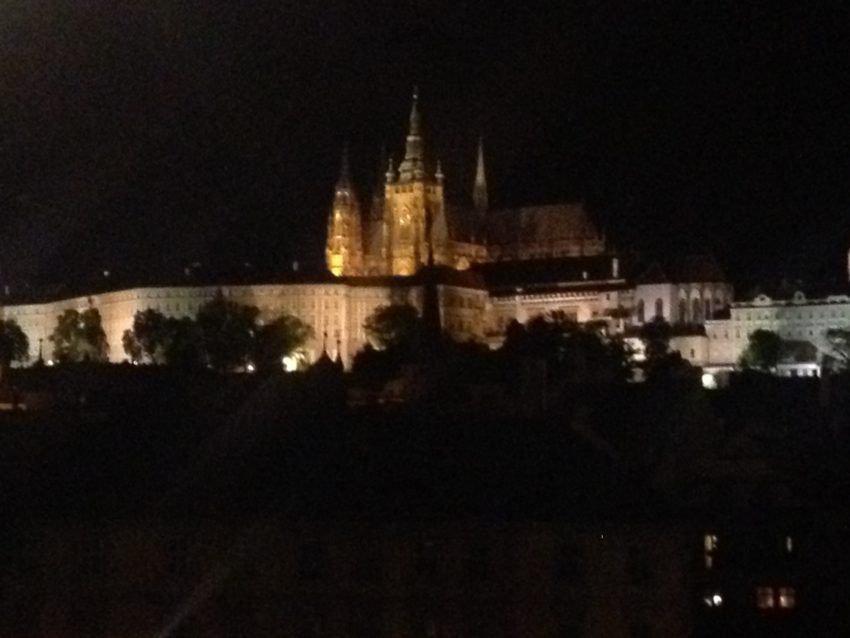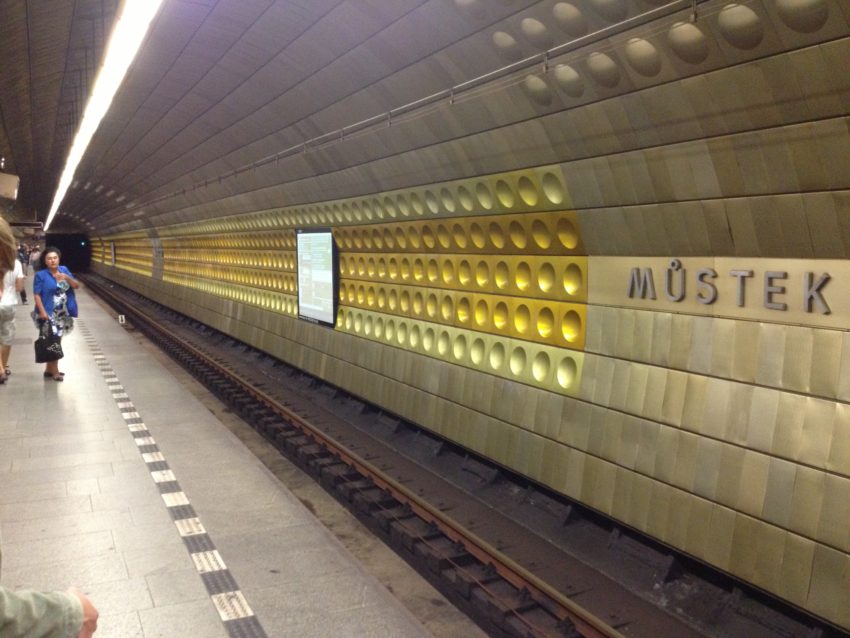Retired in Rome Journal: Prague Castle a disappointment but Church of SS Cyril a terrifying look at Czech’s haunting past




AUG. 14 — PRAGUE
In all my travels, I can’t remember a landmark in the world that didn’t live up to expectations. The Pyramids in Egypt blew me away. The Eiffel Tower is the prettiest man-made structure in the world. I never tire of flying over the Grand Canyon. But yesterday I found a place that left me asking, What’s the big deal?
Prague Castle.
Maybe it was my level of fatigue after walking for two days, but the gargantuan 9th century monster overlooking the city left me gasping less than I have looking at a really good sunset.
It’s basically … a church.
To reach Prague Castle, I took the clean, organized and simple subway system I have fallen quickly in love with to the Malostranska stop right across the river. I figured, you can see Prague Castle from Poland. How tough is it to find? I walked out of the station and saw nothing but a city street, retail stores and a mob of tourists.
First key to finding it is forget looking for Prague Castle. It’s called Prasky hrad on all the street signs. (Oddly, Czechs do not capitalize the second word in place names. I never know if it’s part of the name or a Czech verb.) I found no signs anywhere until I saw two young female American backpackers and wasn’t afraid to ask them the stupidest question in Prague: “Where is Prague Castle?”
A long walk up a broad staircase took me to some spectacular panoramic views of Prague. It truly is a beautiful city with all its red brick roofs, statuesque churches and a river snaking through it all. For 44 years under communism, Prague was as gray as a KGB trenchcoat. From above the city today, it looks like it received a paint job, a facelift and some new clothes. If Prague was a woman, she could definitely join the other European capitals at the ball.
However, I saw no signs of a castle. I saw two stern men in powder blue suits staring straight ahead and guarding the huge archway of Matthias Gate. It led to a series of souvenir shops and tourist information booths that made me feel as if I was stepping into a Czech Disneyland.
The street was a madhouse. It was packed with tourists. Japanese posing in front of the views, people taking selfies, obnoxious backpackers sidling up to the annoyed armed powder-blue guards who I swore were getting itchy trigger fingers.

I walked into a huge courtyard with a small fountain and the pretty red-tiled Basilica of St. George. But, still, no castle. Where were the turrets? Where was the drawbridge? I was lost. I had no clue where I was. Lonely Planet’s exhaustive description of the castle and map were hopelessly confusing. I had no idea what I was looking at.
I went up to a teenage kid with wispy black hair and a name tag at the door of the basilica and found my only rude Czech. He was talking to his young friend with a punk haircut and tried to be typically teenage annoying.
Me: “What courtyard am I in?”
Boy: “What?”
Me: “What courtyard am I in?”
Boy: “I don’t know.”
Me: “Where am I?”
Boy: “I don’t know.”
Me: “You work here and you don’t know where we are?”
Boy: “No.”
I declined asking when they legalized hashish in Prague and proceeded to the next courtyard. I had my head buried in Lonely Planet’s confusing map more than I did my surroundings. There is nothing more frustrating than reading fascinating descriptions of historical monuments and not knowing where the hell they are.
The next courtyard had the absolutely massive St. Vitus Cathedral, occupying the same site as a Romanesque rotunda in 929. It towers into the heavens. Its elaborately decorated, massive doors and tower are a challenge for any camera but the courtyard is as large as Lenin Square in Moscow. This area is where the Czech Government has always ruled from what is now a long string of yellow buildings opposite the cathedral. There’s a giant monolith dedicated to the victims of WWI. It’s a nice courtyard. Only one problem.
There was no castle.
I stood there, my Lonely Planet and jaw both agape, absolutely frozen in confusion. How do you go up to someone in what is supposed to be Prague Castle and ask, “Where is Prague Castle?” It’s like rafting down the Grand Canyon and asking, “Anyone seen the Grand Canyon around here?”
Frustrated, confused and a little upset, I walked out. I stopped for one last view of the city below and then I saw it: the rivulet edge that goes around the complex. I had found my castle. The whole area is the castle. Prague Castle is not something Disney World would use as a model. For 1,200 years it has served as a center of power. You can do that better with a complex than a moat. St. Vitus Cathedral is just part of it but it’s what you see from the city below. So basically, that’s what Prague Castle is.
A church.

Another Prague church impressed me much more. It’s on the periphery of the city’s beaten path just west of Charles Square, a square so big it looks like a park. In 1942, the Church of SS Cyril & Methodius hid seven Czech heroes who assassinated Reinhardt Heydrich, one of the organizers of the Holocaust and the Nazi governor of this region then known as Moravia and Bohemia. Germans, getting a tip from a Czech traitor named Karel Curda, attacked the church with guns and fire hoses, hoping to flood the paratroopers. Three were killed in the attack and the other four committed suicide rather than dying.
On a pleasant 65-degree evening, I found the church on a street corner not far from the river. Under the plaque commemorating the event, dozens of bullet holes in the wall are still visible.
Footnote: In retaliation for Heydrich’s assassination, the Nazis destroyed the small town of Lidice, which the Nazis believed housed a family linked to the assassination. On June 10, the Nazis shot all 173 men in the village, 10 miles northwest of Prague, and shipped the women to a concentration camp in Ravensbruck, north of Berlin. Of the 105 children left orphaned, 82 were gassed in an extermination camp in Chelmno, Poland, and six more died in a children’s home. The rest were sent to German foster parents. The village was burned and bulldozed. No trace remains. In its place is parkland, curiously peaceful and quiet. Memorials are dedicated to a haunting past the Czech Republic will never forget, no matter how much new paint it applies.


August 26, 2014 @ 5:38 pm
What wonderful opportunities you are having.